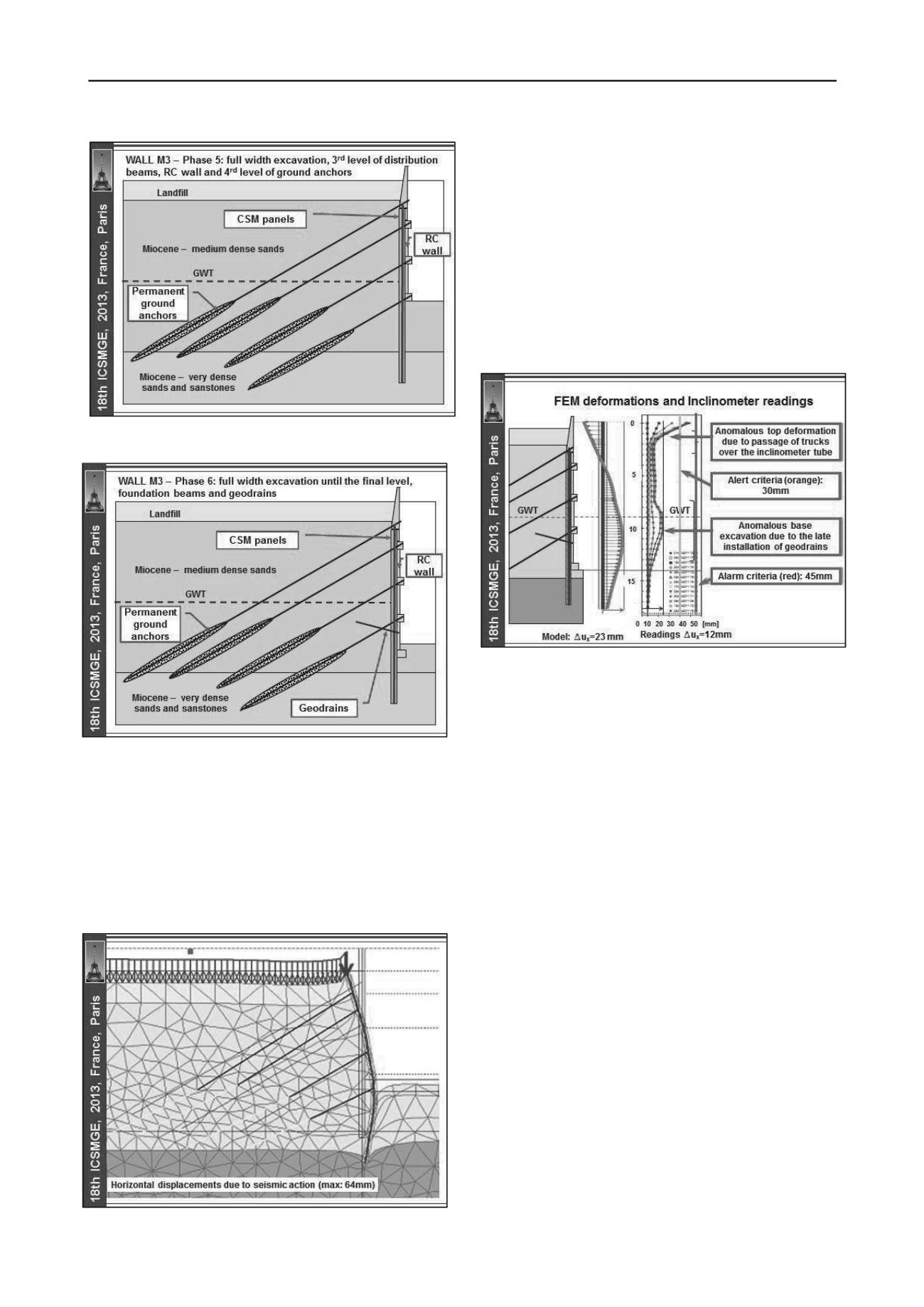
2074
Proceedings of the 18
th
International Conference on Soil Mechanics and Geotechnical Engineering, Paris 2013
6 MONITORING AND SURVEY PLAN
Considering the innovative aspects of the described solutions, a
tight monitoring and survey plan was applied, taking into
account the need to perform the construction in safe and
economic conditions, for both the site and the neighbourhood
conditions. In order to accomplish this goal the following
equipment’s /devices were installed: inclinometers (11un.),
topographic targets (65un.) and ground anchors load cells
(22un.). Measurements confirmed the excellent overall behavior
of the adopted solution, confirming the importance of the
previous confinement on the supported soil due to the soil –
cement panels, leading, in general, to lower deformations than
the ones predicted at the design stage, in spite of some
anomalous movements, as presented on Figure 17.
Figure 14. Phase 5.
Figure 15. Phase 6.
5 DESIGN
All the soil - cement panels were design in order to achieve an
unconfined compression resistance of at least 4,0MPa and a
Young Modulus of 1GPa. Due to the soil and water chemical
properties, pozolanic cement was adopted. For the design of the
adopted solution FEM analysis was carried out, using Plaxis 2D
software. The maximum estimated horizontal displacement was
about 64mm due to the most critical seismic action (Figure 16).
Figure 16. Horizontal displacements according to the FEM model.
Figure 17. Comparison between predicted FEM deformations and
inclinometer readings for static actions.
7 MAIN CONCLUSIONS
As main conclusions it is possible to point out the follwing
advantages of the adopted solution:
Good confinement of the excavated soils, due to the
preliminary ground improvement effect of the soil -
cement panels, allowing a very high and safe construction
rate;
Low deformations as confirmed by the monitoring.
Good wall finishing face and water tightness.
Environmental advantages associated to the CSM
technology, minimizing the excavated ground volume.
Application field to almost every kind of geological and
geotechnical scenarios, as well as to complex and
sensitive neighbourhood conditions.
8 ACKNOWLEDGEMENTS
The authors are grateful to the owner of the walls, REFER, for
his permission to the presentation of this paper. The
construction works were performed by OBRECOL (general
contractor) and GEORUMO (geotechnical contractor).
9 REFERENCES
Gomes Correia A., Tinoco J., Pinto A. and Tomásio R., 2013. An
Anchored Retaining Wall in CSM.
Proc. 18th European
Conference on Soil Mechanics and Geotechnical Engineering
,
Paris, France.
Pinto A., Tomásio R., Pita X., Pereira A. and Peixoto A. 2011. Cutter
Soil Mixing Solutions in Portugal on Hard Soils and Weak Rocks.
Proc. 15th European Conference on Soil Mechanics and
Geotechnical Engineering
, September 2011, Athens, Greece, Part 2
– 3.3 – Ground Reinforcement, pp. 1037–1042.


